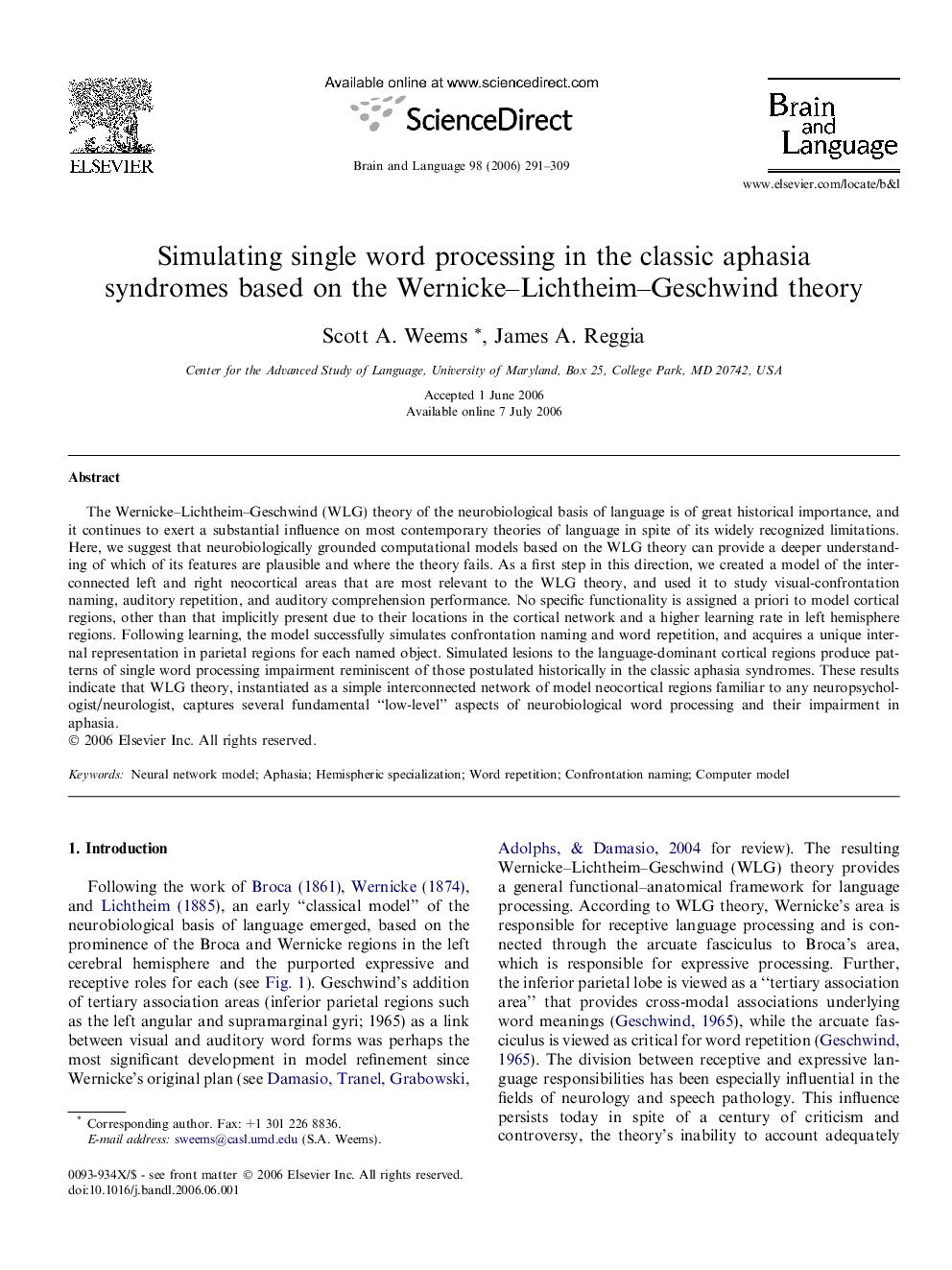| Article ID | Journal | Published Year | Pages | File Type |
|---|---|---|---|---|
| 926035 | Brain and Language | 2006 | 19 Pages |
The Wernicke–Lichtheim–Geschwind (WLG) theory of the neurobiological basis of language is of great historical importance, and it continues to exert a substantial influence on most contemporary theories of language in spite of its widely recognized limitations. Here, we suggest that neurobiologically grounded computational models based on the WLG theory can provide a deeper understanding of which of its features are plausible and where the theory fails. As a first step in this direction, we created a model of the interconnected left and right neocortical areas that are most relevant to the WLG theory, and used it to study visual-confrontation naming, auditory repetition, and auditory comprehension performance. No specific functionality is assigned a priori to model cortical regions, other than that implicitly present due to their locations in the cortical network and a higher learning rate in left hemisphere regions. Following learning, the model successfully simulates confrontation naming and word repetition, and acquires a unique internal representation in parietal regions for each named object. Simulated lesions to the language-dominant cortical regions produce patterns of single word processing impairment reminiscent of those postulated historically in the classic aphasia syndromes. These results indicate that WLG theory, instantiated as a simple interconnected network of model neocortical regions familiar to any neuropsychologist/neurologist, captures several fundamental “low-level” aspects of neurobiological word processing and their impairment in aphasia.
